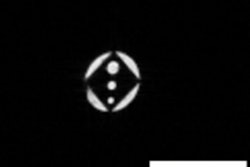Dear AuntMinnie Member,
Fresh off last month's controversy over contrast-induced nephropathy (CIN), we're taking another look at the issue with a pair of stories in our CT Digital Community.
Our first article focuses on a recent presentation by Dr. U. Joseph Schoepf from the Medical University of South Carolina that reviewed the literature on CIN. Dr. Schoepf surveyed a number of recent studies and found that there was little connection between CIN and long-term adverse events.
A new clinical study published this month in Stroke came to a similar conclusion, at least with respect to CIN and CT angiography (CTA). Researchers from Massachusetts General Hospital examined more than 500 patients with intracerebral hemorrhage and found that CIN rates were actually higher in those who didn't get CTA.
The group concluded that CT angiography may be safer than previously thought. You can reach the story by clicking here or by visiting the CT Digital Community at ct.auntminnie.com.
AAPM news
In other news, in our Radiation Oncology Digital Community we're highlighting coverage of the American Association of Physicists in Medicine (AAPM) meeting, currently under way in Anaheim, CA.
At the top of the agenda is an article on a new hybrid MR scanner/linear accelerator under development by Canadian researchers. The group hopes that the combo system can provide more precise treatment than other forms of image-guided radiation therapy, such as those that rely on conebeam CT or other modalities.
Get this story by clicking here, or visit the Radiation Oncology Digital Community at radiation.auntminnie.com.
Congress tackles moly crisis
It's true that the U.S. Congress has had plenty on its plate this month thanks to the healthcare reform debate. But several congressional representatives found time to introduce legislation addressing another healthcare crisis: the supply of medical isotopes.
Two representatives have authored the American Medical Isotopes Production Act, which would commit $163 million in federal funding to create a U.S. source for isotopes such as molybdenum-99. Molybdenum-99, the precursor to technetium-99m, is currently in short supply due to the shutdown of the Canadian reactor that provides North America with much of its supply.
Learn more about the legislation by clicking here, or visit the Molecular Imaging Digital Community at molecular.auntminnie.com.



















